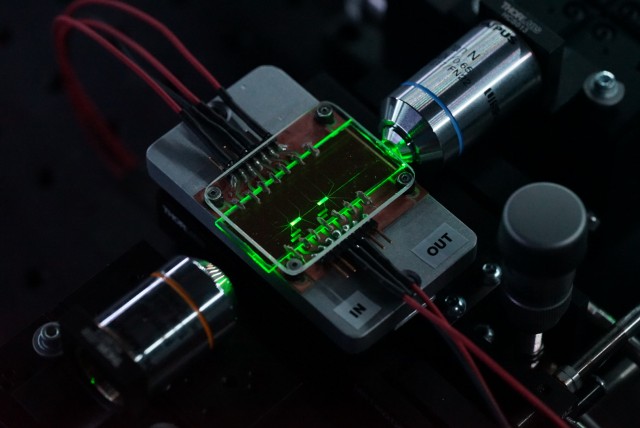24 June 2025
QUICK³ mission explores future secure communication technology
The QUICK³ nano satellite tests components for use in future quantum satellite systems. The goal is to make rapid and secure communication possible using quantum technology. The satellite, developed by a research consortium headed by TUM professor and MCQST member Tobias Vogl, was launched successfully into orbit with a booster rocket from Vandenberg Space Force Base in California on Monday, June 23rd. The mission is expected to deliver its first results by the end of this year.
 © Sebastian Ritter (FSU Jena)
© Sebastian Ritter (FSU Jena) To make quantum communication an everyday reality, a globe-spanning network of several hundred satellites will be needed. Before that, however, the QUICK³ mission aims to demonstrate that the individual components of the nano satellite can withstand conditions in space and successfully interact. Along with researchers from the Technical University of Munich (TUM), the QUICK³ satellite was developed primarily by scientists at Friedrich-Schiller-Universität Jena (FSU), the Ferdinand-Braun-Institut, Leibniz-Institut für Höchstfrequenztechnik (FBH) and Technical University Berlin (TUB) along with international partners at the Institute for Photonics and Nanotechnologies (CNR-IFN) in Italy and the National University of Singapore (NUS).
QUICK³ nano satellite uses single photon source instead of laser beams
“In this mission we are testing single photon technology for nano satellites for the first time,” says Tobias Vogl, Professor of Quantum Communication System Engineering and leader of the project. “At present there is no comparable project anywhere in the world. Either the satellites are much heavier and therefore more expensive or they operate with lasers, which greatly reduces the data transmission rate. The transmission speed is a key advantage of our system, but the satellites have only a few minutes of line-of-sight contact with ground stations on each orbit.”
The second goal of the mission is to test the Born probability interpretation of the wave function under zero gravity conditions. The function describes the probability of finding a quantum particle in a measurement at a specific location – a central concept of quantum mechanics. The question of whether this rule also applies universally, even in outer space, has never been experimentally verified.
Scientific contact
Prof. Dr. Tobias Vogl
Technical University of Munich (TUM)
Professor of Quantum Communication System Engineering
tobias.vogl[at]tum.de
News adapted from
TUM website.
Further information
• The QUICK³ mission is an international research project. The quantum light source was built by the teams at TUM and FSU and integrated with an optical chip from CNR-IFN in Italy. FBH built a laser system to stimulate the quantum light source that is controlled by electronic components from NUS. TUB was responsible for controlling the experiments in space and the interfaces between the payload and the satellite.
• Tobias Vogl was appointed as a professor of Quantum Communication System Engineering at the TUM School of Computation, Information and Technology in July 2023 and is member of MCQST:
• The project is funded by the Federal Ministry for Economic Affairs and Industry.